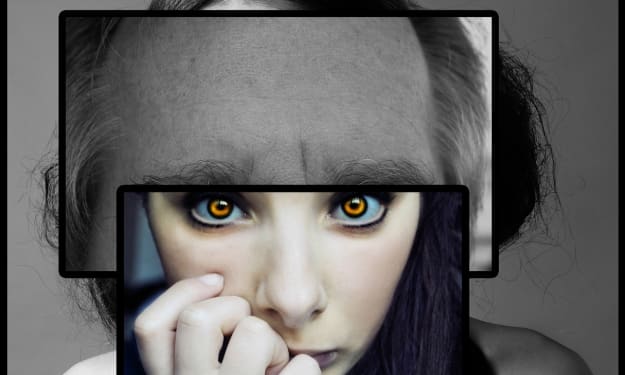Unraveling the Mysteries of Coincidences
Hidden Connections and Perceptual Patterns

Have you ever experienced a coincidence that left you questioning the fabric of reality? It's fascinating how the universe sometimes aligns in peculiar ways, revealing hidden connections and patterns. In this blog post, we'll delve into the realm of coincidences and explore the intriguing phenomenon that captivates our minds.
Let's start with the practice of speaking backward. Did you know that when you speak backward, the words can be reversed and still remain intelligible? It's an unusual skill that raises the question: Are there hidden messages in the way we communicate, or are these mere coincidences?
Speaking of coincidences, have you ever considered the strange correlation between the speed of light and the latitude of the Great Pyramid of Giza? Surprisingly, the digits in the speed of light match exactly with the pyramid's latitude. Coincidence or a sign of something greater at work? We'll unravel this intriguing puzzle.
Hidden messages and anagrams add another layer of mystery. By rearranging the letters in the phrase "the meaning of life," it becomes "be engine of a film" or "the fine game of nil." What do these revelations signify? Are they mere coincidences or indications of deeper meanings lurking beneath the surface?
Our fascination with hidden messages and patterns extends beyond words. Even in music and visual media, we seek connections that may or may not exist. Have you ever tried reversing recorded speech? You might be surprised to hear familiar phrases take on a whole new meaning. It's an amusing experiment that showcases the power of our perception.
Apophenia, the perception of connections or patterns in information, plays a significant role in our fascination with coincidences. Pareidolia, a type of apophenia, manifests when we see or hear things that weren't intended to be there. From hearing our name being called in the sound of running water to spotting faces in random patterns, our brains are wired to find meaning in the chaos.
Our inclination towards patterns and faces stems from our survival instinct. Being hyper-attentive to potential threats has evolutionary advantages. It's better to perceive a shadow as a potential danger than to ignore a genuine threat. This heightened sensitivity to patterns and faces increases our chances of survival and has become the norm over time.
Teasing patterns out of random noise is a skill our brains excel at. We're so adept at this that even truly random sequences might not feel random to us. Apple's iTunes shuffle feature is a prime example. Initially, users complained about the lack of randomness in the selection, as similar songs or those from the same artist would often play consecutively. In response, Apple introduced a "smart shuffle" to appease our pattern-loving brains, making the randomness feel more random.
The phenomenon of syncing music with moving images showcases how our minds can perceive connections that might not exist. Dancing animations, like the famous Spider-Man animation, seemingly sync up with any music you play. However, much of this synchronization occurs in our heads. The movements of these animations follow typical song tempos and contain various related rhythms, allowing them to fit multiple music tempos. Our selection bias further reinforces these connections as we tend to focus on the instances where sync-up occurs, ignoring the countless times it doesn't.
The concept of synchronizing movies and albums has given rise to entire communities dedicated to finding these coincidental pairings. While some speculate about hidden intentions or secret plans, these alignments are often accidental. Our biases, including confirmation bias, play a significant role in perceiving these connections. We actively seek evidence that supports our beliefs while disregarding contradictory information. As the saying goes, "I wouldn't have seen it if I hadn't believed it."
Coincidences can sometimes have tragic outcomes. History is filled with stories that intertwine in extraordinary ways. From the stranger who saved Abraham Lincoln's son, only to be connected to his assassin, to the chance encounter of a couple discovering a shared past at Disney World, these instances blur the line between probability and fate.
The vastness of details in our lives makes it easier to find coincidences, even if they may seem extraordinary at first glance. Littlewood's law, a famous calculation, demonstrates that given the number of hours we are awake each day, the likelihood of a one-in-a-million event occurring to us is higher than expected. With billions of people on Earth and countless potential scenarios, the improbable becomes probable.
Intriguingly, the law of truly large numbers also comes into play. Lightning strikes Earth dozens of times every second, leading to astonishing stories like Walter Summerford's multiple encounters with lightning. The chances of such events happening increase when considering the vast number of opportunities they have over time.
Coincidences can be found between any two people, things, or events if you look long enough. However, the significance we assign to these connections often lies in the eye of the beholder. Over-analyzing and finding meaning in vague predictions are common practices among those who claim psychic abilities.
In the end, coincidences are not as extraordinary as they may initially appear. Probability and our innate desire to find patterns and connections play significant roles in uncovering these seemingly miraculous occurrences. So, the next time you encounter a coincidence, take a moment to ponder the intricacies of the world around us and the fascinating ways in which it unfolds.





Comments
There are no comments for this story
Be the first to respond and start the conversation.